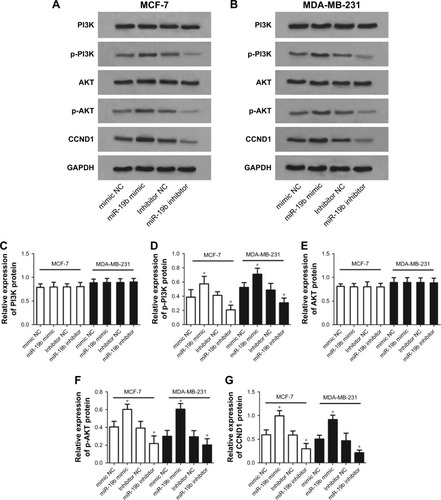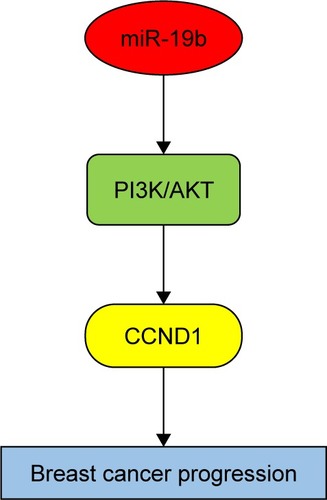Figures & data
Table 1 Association of miR-19b with the clinicopathological features of breast cancer patients
Figure 1 Expression of miR-19b, measured by qRT-PCR, in breast cancer tissues and cell lines.
Abbreviations: miR-19b, microRNA-19b; qRT-PCR, quantitative real time PCR.

Table 2 Multivariate Cox regression analysis for miR-19b in breast cancer patients
Figure 2 Kaplan–Meier survival analysis of breast cancer patients based on the expression of miR-19b.
Abbreviation: miR-19b, microRNA-19b.
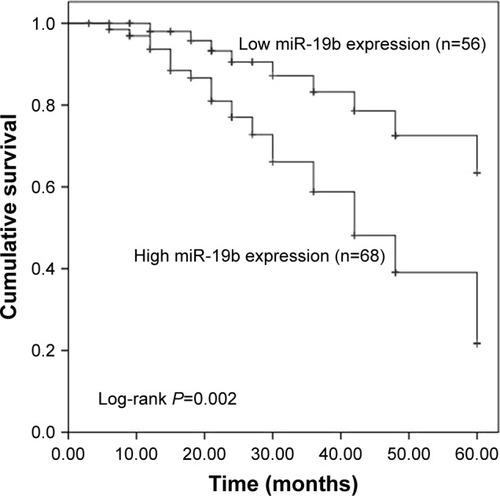
Figure 3 Effects of miR-19b on cell proliferation, migration, and invasion in MCF-7 and MDA-MB-231 cells.
Abbreviations: miR-19b, microRNA-19b; NC, negative control.
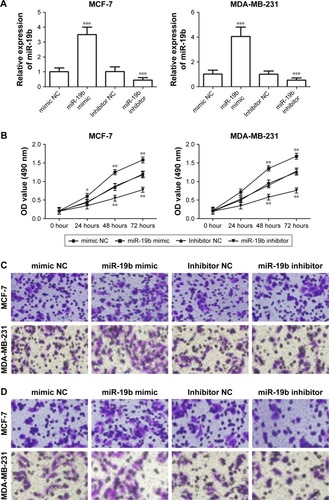
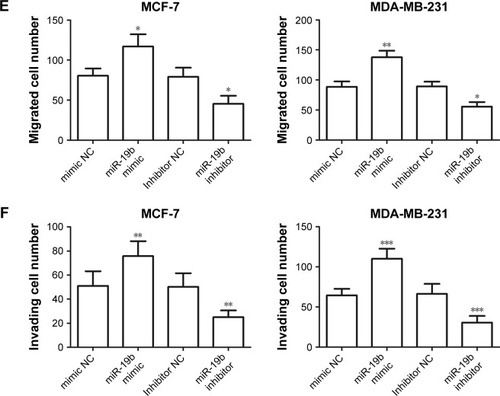
Figure 4 PI3K/AKT signaling pathway was regulated by miR-19b expression in breast cancer cells.
Abbreviations: miR-19b, microRNA-19b; NC, negative control.
